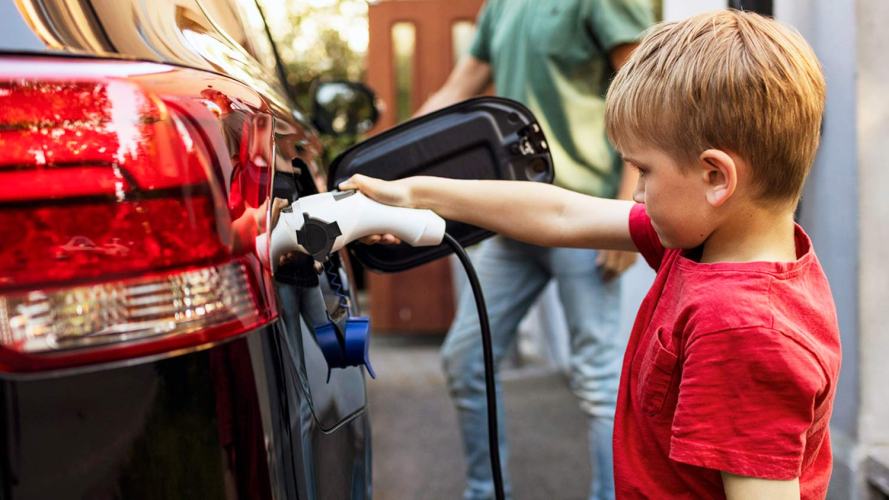Are Utilities Ready? How To Engage Your Customers in the Most Competitive Market Yet



Rising customer expectations will inspire new utility customer experiences. Here’s what’s next.
Energy customers know to call their utility first when they have a question about electric or gas service. But the landscape is changing — fast.
For instance, energy consumption behavior will change drastically with companies like General Motors pivoting to zero-emissions-only vehicle production by 2035. Yet as electric vehicle (EV) adoption rises, many EV shoppers don’t know their electric utility can help them understand the costs and benefits of charging their cars at home. Other new competitors like Google offer personalized, web-enabled products that conserve energy and save money. On-site generation also is becoming more popular as technologies like solar become more affordable and accessible, and microgrids provide localized, reliable generation. Ford Motor Company even touts backup generation as a key value feature of their F-150 electric truck.
Trends are transforming energy and utilities for good
Find out how providers are keeping up in the new energy economy.



Utility providers — who still handle the products and infrastructure for these innovations — have their hands full supporting an increasingly distributed infrastructure while trying to sustain their relevance. Identifying and facilitating such opportunities has become critical for utilities in building and maintaining the utility customer experience. Here are three ways utility providers can remain the trusted owner of the energy relationship as competition heats up:
1. Diversify offerings with non-commodity products and services
Consumers are increasing their demand for smart home products that manage everything from air temperature to home security. This trend coincides with rising consumer interest in generating their own power. Consumers are essentially managing a growing number of energy supplier relationships every year, outside of their utility provider. They are wondering: why can’t this be simpler? The good news is utilities already have the data to tailor solutions for the ways their customers really live and work. Some, for example, are already delivering energy, smart home, broadband, and even insurance in one easy-to-manage subscription.
That’s just one way utilities are responding to changing consumer preferences. And the companies that can quickly configure, package, and quote a wide range of products and services are the ones that will deliver superior customer service, deepen relationships, and build trust in the utility customer experience.
2. Keep customer interactions seamless across every device and channel
Utility providers know conveniences like automated bill pay and mobile account access are table stakes. With 62% of utilities saying improving the customer experience is their top priority, delivering personalized, seamless experiences across devices and channels takes center stage. This is especially important for sales and service, where most customer interactions occur.
“The call center is the main channel for customers, although online and mobile channels are becoming the main points of contact for the more advanced utilities. As a result, the sales and service experiences are very important,” said Wytse Kaastra, senior managing director at Accenture Sustainability Services.
All it takes is one bad outage experience to make clear the importance of relevant and accurate communications. That’s why utility providers that deliver transparent and timely messaging across multiple formats are more likely to satisfy customers — even when the power is out.
Consider a customer who reports storm damage and a loss of power using the utility’s mobile app. The interaction quickly becomes complicated when the self-guided reporting tool transfers the customer to a live agent without the necessary background. With a seamless experience, on the other hand, the live agent already has the customer’s data and the outage information available. In addition, the agent is able to give the customer a repair appointment window because they can access the field service team’s schedule. In this scenario, the utility provider can connect mobile and voice experiences. Even better, connected internal systems mean the agent can answer the question the customer is really asking: When will power be restored?
3. Renovation, not revolution
As customer preference evolves and choices expand, energy providers are motivated to enhance their offerings. Providers are digitizing, rethinking their core systems, and connecting data to deliver a seamless, customer-centric experience. Although this may sound like a long and risky reconstruction project, utilities don’t have to rip and replace legacy systems to get there. Instead, they can take a step-by-step approach to digital transformation with purpose-built tools layered across existing technology. This approach can unlock new functionalities and further enhance the utility customer experience:
Give employees a single, shared view of the customer
Integrate customer functions on one screen so sales and service agents can answer customer questions, solve problems, and quote products and services without toggling between systems.
Streamline sales and service interactions
Deliver better customer service with tools, analytics, and insights that support personalized offers and experiences. Quickly generate complex quotes for business customers, including those for customers with multiple sites and multiple product requests. Streamline service interactions and save time by connecting online, mobile, voice, and in-person touchpoints.
Empower customers with guided self-service
Empower residential and commercial customers with guided digital journeys that simplify common interactions, like starting or stopping service. Free up time so live agents can focus on more complicated questions and problems.
Take the next step in the utility customer experience
Customers already depend on utilities to keep the lights on. But today, that’s not enough. Digital transformation is the key to staying competitive in a world where customers want to be known, have fair access to benefits, and have a hand in creating a more sustainable and reliable energy future.
Connect data to deliver on higher customer expectations
Learn more about the digital strategies transforming the energy and utilities industry.
















